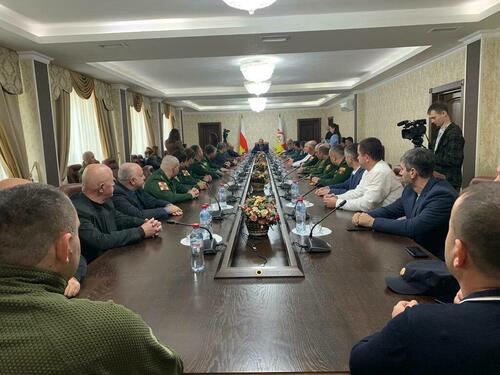In St. Petersburg, on the eve of Victory Day, wreaths were laid on behalf of the people of South Ossetia at the foot of the Motherland monument at the Piskaryovsky Memorial Cemetery and at the memorial granite slab, opened in honor of the natives of Ossetia, the defenders of besieged Leningrad.
The column of representatives of diplomatic missions was traditionally headed by the delegation of the Embassy of the Republic of South Ossetia in Russia, the press service of the diplomatic mission reports.
The memory of the victims was honored with a minute of silence..
South Ossetia is known for its military and labor exploits during the Great Patriotic War. More than 20 thousand inhabitants of a small region were fighting on the fronts. Almost half (more than 11 thousand) of them did not return home. More than seven thousand soldiers are still listed missing.
32 Ossetians became heroes of the Soviet Union; eight of them were natives of South Ossetia. Among them are famous commanders - twice Hero of the Soviet Union, Hero of the Mongolian People's Republic, Army General Issa Pliev, Hero of the Soviet Union, Army General Georgy Khetagurov, Hero of the Soviet Union, Colonel General Khadzhi-Umar Mamsurov and many others. No nation has given the world as many heroes and generals in relation to their numbers as the Ossetians.
Equally important is the economic contribution of South Ossetia to the approach of the Great Victory. Already on June 23, 1941, the authorities of South Ossetia, with the approval of the top Soviet leadership, ordered the creation of a large military rear base of the USSR in this region. And at the end of June 1941, South Ossetia became one of the main rear bases of the Soviet army, as well as the economy of the whole country. In addition, more than 20 thousand Soviet citizens evacuated in 1941-1942 from temporarily occupied areas and from the frontline found shelter, treatment, food and work here. At the same time, the Stalinir–Dzau – Buron–Dzaujikau highway (Vladikavkaz), 180 km away, became the most important artery for supplying Soviet troops in the North Caucasus.







